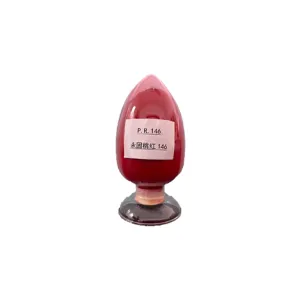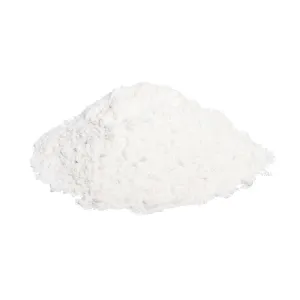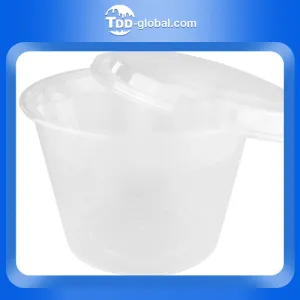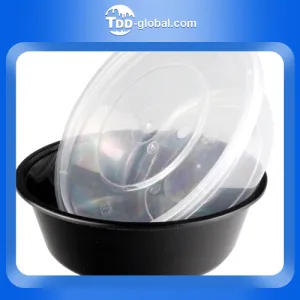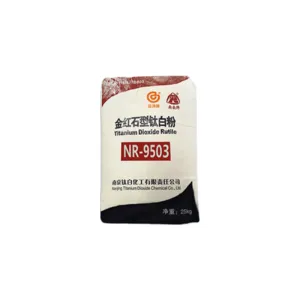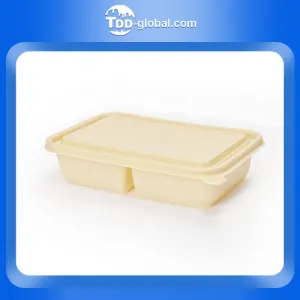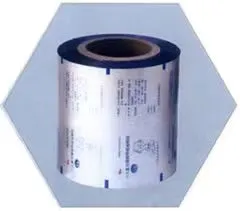Dyes refer to a class of organic compounds that can give other substances a bright and firm color. Since the pigments used today are all artificially synthesized, they are also called synthetic dyes. Dyes and pigments are generally compounds that have their own color and can make other substances obtain bright and firm colors in a molecular or dispersed state.
Dye classification #
According to dye properties and application methods, dyes can be classified as follows.
According to status
Water-based color paste, oil-based color paste, water-based color, essential oil-based color essence
According to use
Ceramic Pigments Coating Pigments Textile Pigments Plastic Pigments
According to source
Natural dyes are divided into plant dyes, animal dyes, and synthetic dyes (also known as artificial dyes ) according to their usage.
According to dye properties and application methods
Direct dyes , insoluble azo dyes , reactive dyes, vat dyes, soluble vat dyes, sulfur dyes, sulfur vat dyes , phthalocyanine dyes, oxidation dyes, condensation dyes, disperse dyes, acid dyes, acidic mordants and acidic mordant dyes, basic and cationic dyes.
direct dyes #
This type of dye gets its name because it can be dyed directly on various fibers such as cotton, linen, silk, and wool without relying on other chemicals. Its dyeing method is simple, the chromatogram is complete, and the cost is low. However, its washing and light fastness are poor. If appropriate treatment methods are used, the fastness of the dyed finished product can be improved.
reactive dyes #
Also known as reactive dyes. This type of dye is a new type of dye that was only developed in the 1950s. Its molecular structure contains one or more active groups, which can chemically react with fibers under appropriate conditions to form covalent bonds. It can be used for dyeing cotton, linen, silk, wool, viscose, nylon, vinylon and other textiles.
Sulfur dyes #
Most of these dyes are insoluble in water and organic solvents , but can be dissolved in alkali sulfide solution. After dissolution, they can be directly dyed on fibers. However, because the dye solution is too alkaline, it is not suitable for dyeing protein fibers. This type of dye has a uniform chromatogram, is cheap, and has good color fastness, but the color is not bright.
Disperse dyes #
This type of dye has very low solubility in water, very fine particles, and is a dispersion in the dye liquor. It is a non-ionic dye and is mainly used for dyeing polyester with high dye fastness.
Acid Dyestuff #
This type of dye is water-soluble, and most of them contain sulfonic acid groups, carboxyl groups and other water-soluble genes. Protein fibers can be dyed directly in acidic, weakly acidic or neutral media, but the wet processing fastness is poor.
coating #
It is suitable for all fibers. Through the mechanical attachment of resin to fibers, dark fabrics will become hard, but the color registration is very accurate. Most of them have good light fastness and good washing fastness, especially medium and light.
Dye naming #
The various types of dyes introduced above are not only numerous in number, but also have different properties and usage methods for each type of dye. In order to facilitate distinction and mastery, a unified naming method for dyes has been officially adopted. As long as you see the name of the dye, you can roughly know what type of dye it belongs to, as well as its color, luster, etc. Our country uniformly uses a three-section nomenclature for the naming of dyes. The name of the dye is divided into three parts, namely, the title, the color name and the endnote.
1. The title mainly indicates the name of the dye according to its application method or properties, such as disperse, reduction, reactive, direct, etc.
2. The color name indicates the name of the color that can be obtained by dyeing fabrics with this dye according to standard methods. Generally, there are four ways to express it:
(1) Use common physical names, such as red, green, blue, etc.
(2) Use plant names, such as orange, peach , grass green, rose, etc.
(3) Use natural phenomena to express it, such as sky blue, golden color, etc.
(4) Expressed by animal names, such as rat gray, goose yellow, etc.
3. The endnote indicates the shade, performance, status, concentration of the dye and the fabrics it is suitable for, etc. It is generally represented by letters and numbers.
The three-section nomenclature of dyes is more convenient to use. For example, vat violet RR, you can know that this is a purple vat dye with red light. The title is reduction, the color name is purple, R means red light, and the two R means the red light is heavier.
At present, the naming of dyes has not been unified in all countries in the world. Each dyeing factory has a name for each dye it produces. Therefore, the same dye may have several names.
Dye application #
1. Select dyes based on fiber properties. Due to the different properties of various fibers, it is necessary to select suitable dyes when dyeing. For example , when dyeing cotton fiber , because its molecular structure contains many hydrophilic hydroxyl groups, it is easy to absorb moisture and swell, can react chemically with reactive groups, and is more resistant to alkali, so you can choose direct, reduction, sulfurization, and ice dyes. and reactive dyes. Polyester has strong hydrophobicity and is not resistant to alkali at high temperatures. Generally, the above dyes should not be used, but disperse dyes should be used for dyeing.
2. Select dyes according to the use of the dyed objects. Since the uses of the dyed objects are different, the requirements for the fastness of the dyed finished products are also different. For example, cloth used as curtains is not washed frequently, but it is often exposed to sunlight. Therefore, when dyeing, you should choose dyes with higher light fastness. For dyeing underwear and light-colored fabrics worn in summer, dyes with higher washability, lightfastness, and sweat resistance should be selected because they need to be washed and sun-dried frequently.
3. Select dyes based on dye costs. When selecting dyes, you must not only consider the color and fastness, but also consider the cost and supply of the dyes and additives used . For higher-priced dyes, you should try to replace them with other dyes that can produce the same effect to reduce production costs.
4. Selection of dyes when color matching When color matching is required, attention should be paid to their composition, solubility, color fastness, dye uptake rate and other properties when selecting dyes. Since the dyeing properties of various dyes are different, the dyeing effect is often affected by differences in temperature, solubility, dye uptake, etc. during dyeing. Therefore, when color matching, dyes with similar properties must be selected, and the closer the better, which can be beneficial to the control of process conditions and the stability of dyeing quality.
5. Select dyes based on the properties of dyeing machinery. Due to different dyeing machinery, the properties and requirements for dyes are also different. If it is used for jig dyeing, dyes with higher directness should be selected; for pad dyeing , dyes with lower directness should be selected. Otherwise, products that do not meet the requirements will be dark at the front and light at the back, with uneven color and luster.
Environmentally friendly dyes #
In accordance with the requirements of ecological textiles and the ban on 118 kinds of dyes, environmentally friendly dyes have become the focus of the development of the dye industry and the printing and dyeing industry. Environmentally friendly dyes are an extremely important condition for ensuring the ecology of textiles. In addition to the necessary dyeing performance, applicability of the process, application performance and fastness performance, environmentally friendly dyes also need to meet environmental quality requirements.
Environmentally friendly dyes should include the following ten aspects:
(1) It does not contain azo dyes that are expressly stipulated by the German government, the European Community and Eco-Tex Standard 100 and will crack and release 22 carcinogenic aromatic amines under specific conditions, regardless of whether these carcinogenic aromatic amines are free in the dye or are produced by the dye. Produced by lysis;
(2) Not an allergic dye;
(3) Not a carcinogenic dye;
(4) It is not an acutely toxic dye;
(5) The content of extractable heavy metals is below the limit value;
(6) Does not contain environmental hormones;
(7) Does not contain chemical substances that can cause environmental pollution;
(8) Does not contain variable compounds and persistent organic pollutants;
(9) Formaldehyde content is below the specified limit;
(10) Varieties that do not contain restricted pesticides and the total amount is below the prescribed limit;
Strictly speaking, dyes that can meet the above requirements should be called environmentally friendly dyes. In addition to meeting the above requirements, truly environmentally friendly dyes should also be environmentally friendly during the production process and not produce “three wastes”, even if a small amount of waste is produced. The “three wastes” can also be treated through conventional methods to meet national and local environmental protection and ecological requirements.
direct dyes #
Direct dyes account for the majority of banned dyes. Therefore, in recent years, the development of environmentally friendly direct dyes has become the focus of the development of new varieties in the dye industry. Specific direct dye varieties include the following:
(1) Diaminostilbene disulfonic acid direct dyes: These dyes have bright colors and moderate fastness. Direct lightfast orange GGL (CI Direct Orange 39) is an environmentally friendly dye with good performance. Direct Lightfast Yellow 3BLL (CI Direct Yellow 106) is a triazole direct dye with a sunfastness of level 6~7. Direct light fast green IRC (CI direct green 34) has a high dye uptake rate and excellent dye fastness, with sun fastness reaching level 6~7 and washing fastness reaching level 3~4.
(2) 4.4`-diaminodiphenylurea direct dyes: These dyes are non-carcinogenic and have high light fastness. There are many application varieties and it is an environmentally friendly dye. Such as direct light fast yellow RSC (CI direct yellow 50), direct light fast red F3B (CI direct red 80), CI direct brown 112, CI direct brown 126, CI direct brown 152, etc.
(3) 4.4`-Diaminobenzoylanilide direct dyes: These dyes have good fastness and are environmentally friendly dyes. Such as direct green NB (CI direct green 89), direct yellow-brown N-D3G (CI direct brown 223), direct black N-BN (CI direct black 166), etc.
(4) 4.4`-Diaminobenzenesulfonanilide direct dyes: This type of dye is a black direct dye synthesized from diamino compounds, and its dyeing performance and fastness are very good. It is widely used for dyeing cotton, linen, viscose fiber, silk and leather. Products that can replace banned direct dyes have been developed and screened, such as CI Direct Black 166 (Direct Black N-BN), CI Acid Black 210 (Acid Black NT), CI Acid Black 234, etc.
(5) Diaminoheterocyclic direct dyes: These dyes are direct dyes synthesized from diaminoheterocyclic compounds , such as dibenzodioxazine direct dyes. These dyes have bright colors, high tinting strength and fastness. , the sun fastness reaches level 7. Representative varieties include CI Direct Blue 106 (Direct Lightfast Brilliant Blue FF2GL), CI Direct Blue 108 (Direct Lightfast Blue FFRL), etc.
(6) Environmentally friendly direct dyes for polyester/cotton (polyester/viscose) fabrics: Polyester/cotton, polyester/viscose blended fabrics and other fibers with different properties are dyed in the same bath. This requires direct dyes to have excellent high temperature stability and good It has good lifting power and reproducibility, good fastness and environmental protection performance. The direct blended D-type dye developed by Shanghai Dyestuff Company is an environmentally friendly dye that can achieve the above performance. Currently, there are more than 25 varieties, such as CI Direct Yellow 86 (Direct blended yellow DR), CI Direct Yellow 106 (Direct blended yellow D -3RLL), CI224 direct blended red D-GLN, CI direct purple 66 (direct blended purple D-5BL), CI direct blue 70 (direct blended blue D-RGL), CI95 direct blended brown D-RS, CI direct black 166 (Directly blended black D-ANBA) etc. Some of the varieties are copper complexes, and free copper should be within the limit value (250mg/kg) specified by ETAD.
(7) Kayaelon C-type dyes developed and screened by Nippon Chemical Company: CI Direct Yellow 161 (Yellow C-3RL), CI Direct Red 83 (Rubine C-BL), CI Direct Blue 288 (Blue C-BK), CI direct green 59 (Caeen C-CK), CI direct black 117 (Crey C-RL), etc.
Thailand’s Modern Group has launched the Modern Direct series of advanced direct dyes, Dystar has developed the Sirius Plus series of direct dyes, Ciba has launched Cibafix ECO direct dyes, BASF has launched the Diazol series of direct dyes, Yorkshire has launched the Benganil series of direct dyes, etc. These dyes have similar functions, such as bright colors, high light fastness, environmentally friendly dyes that do not contain heavy metals, excellent high temperature stability, and are suitable for one-bath and one-step dyeing of polyester-cotton blended fabrics.
Acid Dyestuff #
(1) Red, orange and yellow acid dyes. Among the acidic environmentally friendly dyes that have been developed, red acid dyes include: CI acid red 37, CI acid red 89 (weak acid red 3B, 2BS), CI acid red 145 (weak acid red GL )wait. CI Acid Red 336 and CI Acid Red 361 are both important varieties of the red spectrum. Orange acid dyes include: CI acid orange 67 (weak acid yellow RXL), CI acid orange 116 (acid orange AGT), CI acid orange 156 (weak acid orange 3G). The main yellow acid dyes are: CI acid yellow 42 (weak acid yellow Rs, acid yellow R) and CI acid yellow 49 (acid yellow GR200).
(2) Blue, green, and purple acid dyes. Most of the environmentally friendly acid dyes in the blue spectrum are bromine derivatives, and there are many new blue varieties, such as CI acid blue 277, CI acid blue 344, CI acid blue 350, CI acid Blue 9 (Brilliant Blue FCF) etc. Green acid dyes are of the anthraquinone type. New products that have been developed in China include CI Green 17, CI Acid Green 28, CI Acid Green 41, CI Acid Green 81, etc. The purple ones mainly include CI acid violet 17 (acid violet 4BNS), CI acid violet 54 (weakly acidic brilliant red 10B), CI acid violet 48, etc.
(3) Brown and black acid dyes There are also many new varieties of brown acid dyes, the more important ones are CI acid brown 75, CI acid brown 98, CI acid brown 165, CI acid brown 348, CI acid brown 349, etc. The main black varieties include CI Acid Black 26, CI Acid Black 63, CI Acid Black 172, CI Acid Black 194, CI Acid Black 210, CI Acid Black 234, CI Acid Black 235, CI Acid Black 242, etc.
Disperse dyes #
Disperse dyes have more than 1,200 molecular structures so far, and the number of products has reached more than 3,500. Disperse dyes have some incompatibility with the environment and ecological protection. The main reason is that some disperse dyes will reduce and decompose to produce carcinogenic aromatic amines. Some products are allergic dyes. Many products have AOX problems and due to the heat in the printing and dyeing process. Reduced fastness caused by migration , etc.
In recent years, in order to improve the functions and environmental protection requirements of disperse dyes, some new dyes have been developed, mainly in the following aspects:
(1) New disperse dyes that meet the requirements of Eco-Tex Standard 100. Such products mainly include Ciba Refining Company’s Cibacet EL series of dyes used for dyeing acetate fiber and its blended fabrics; BASF Company’s Dispersol C-VS for polyester A series of dyes for dyeing fibers and blended fabrics; Yorkshire Company’s Serisol ECF environmentally friendly disperse dyes for acetate fiber dyeing; Mitsui-BASF Company’s Compact ECO series dyes; Nippon Chemical Company’s Kayalon Polyester LW is suitable for polyester fibers and polyurethane A series of disperse dyes for dyeing blended fabrics composed of fibers ; Japan’s Sumitomo Company’s Sumikaron MF dye is suitable for dyeing fine-denier polyester fibers.
(2) New disperse dyes that replace allergic disperse dyes. CI Disperse Orange 76 and CI Disperse Orange 37 are the most commonly used allergic disperse dyes recognized on the market. The main ones used to replace allergenic dyes are Kayalon Polyester Yellow Brown 3RL (EC) 143 from Nippon Chemical Company; Dianix Orange UN-SE 01 environmentally friendly disperse dye developed by DyStar Company; Sumikaron Blac S-EC 300 from Sumitomo Chemical Company of Japan % disperse dyes; Lumacron Black FD disperse dyes developed by the British company LJSpecialities, etc.
(3) New disperse dyes that do not contain adsorbable organic halides. This type of dye mainly includes Terasil Blue W-BLS dye from Ciba Refining Company, which is suitable for exhaust dyeing and continuous dyeing of polyester fiber and its blended fabrics; Palanil Cyanine B 200% and Palanil Luminous Yellow GN developed by BASF are also ultra-bright disperse dyes that do not contain adsorbable organic halides. They are suitable for dyeing polyester fibers and their blended fabrics; the company has also launched Dispersol to the market Deep Red SF is a new generation of high-performance disperse dyes.
(4) High-performance disperse dyes with excellent washing fastness. Such products mainly include the Terasil W series new disperse dyes with excellent wet fastness developed by Ciba Refining Company, which has 11 varieties; Dianix HF dyes developed by DyStar Company It is also a high-performance disperse dye with very good washing fastness, excellent application performance, ease of use and other characteristics; BASF’s Dispersol XF is a new disperse dye with top-level washing fastness; and Clariant’s Foron Blue RD -SE 300, which is a high-strength black disperse dye for rapid dyeing, has high lifting power and dye bath adsorption rate, especially the dyed product has good wet fastness after heat fixation; developed by the British company LJSpecialities A new type of disperse dye with excellent washing fastness, the trade name is Itosperse HW dye, which has excellent washing and sublimation fastness and is harmless to the ecological environment.
(5) Environmentally friendly disperse dyes composed of biodegradable dispersants. Dispersants in disperse dye products are also a factor that affects environmental protection. The naphthalene sulfonate formaldehyde condensate series dispersants and lignin sulfonate series dispersants have been widely used so far. Agents, etc. are all a matter of biodegradability. In recent years, BASF has successfully developed a new biodegradable dispersant Setamol E. DyStar has also developed new biodegradable dispersants and used them to form environmentally friendly disperse dyes such as Dianix ECO Liquid series dyes.
reactive dyes #
(1) Environmentally friendly reactive dyes with high fixation rates. Currently, domestic reactive dyes with higher fixation rates include KE type, ME type, and B type. Foreign reactive dyes include Procion H-EXL, Sumifix Supra, Basilen Fm, and Cibacron. Type C. The fixation rate of these new reactive dyes is above 80%. They have good level dyeing and diffusibility and are not affected by changes in liquor ratio, temperature, and salt content. They are also good in washability because they have a suitable one-time exhaustion rate. , has excellent light fastness and perspiration fastness.
(2) Environmentally friendly reactive dyes for low-salt dyeing. In the process of reactive dye dyeing, inorganic salts are commonly used as dye accelerators and are added to the dye liquor. High-salt wastewater destroys the ecological environment of the water and is harmful to crops and humans. serious threat. Sumitomo Corporation of Japan uses environmentally friendly series of dyes such as Sumifix Supra NF and E-XF. The salt dosage is 60% of ordinary dyes; Ciba Corporation’s Cibacron LS dye has a particularly high affinity for fibers, good dye solubility, and high bond fastness. , the salt consumption is low, only 1/3~1/2 of general reactive dyes, the dye uptake rate is over 90%, and the color fixation rate is 80%; Kayacion E-CM dyes and Kayacion E-MS developed by Nippon Chemical Company Dyes, Kayacion E-S133 dyes, and DyStar’s Levafix EA, Levafix ES, and Levafix OS series dyes all have the function of low-salt dyeing. The dyes have good solubility, good level dyeing, and low salt consumption, which is environmentally friendly. new products.
(3) Environmentally friendly reactive dyes that do not contain heavy metals and adsorbable organic halides. These reactive dyes mainly include Ciba-cron Black CNN, Black W-NN, Black C-2R, Black LS-N, etc. and domestic reactive dyes. Black KN-GZGC133 (granular material) and other black reactive dyes.
(4) Environmentally friendly reactive dyes that improve fastness. These dyes include Cibacron Light dyes, Sumifix Supra HF and NF series dyes, Kayacion E-LE and AP dyes for printing. Their perspiration-sunlight fastness reaches Level 3~4 and above.
Sulfur dyes #
Commonly used sulfur dyes are not allergic dyes, carcinogenic dyes or acutely toxic dyes. They do not contain heavy metals and adsorbable organic halides. They use less salt during application and consume much less water and energy than reactive dyes. Therefore, sulfur dyes are also One of the alternative dyes to banned dyes, especially black. However, when dyeing with sulfur dyes, it is necessary to add sodium sulfide and alkali to reduce it. The wastewater contains 15% to 20% sulfide and the hydrogen sulfide odor generated during the manufacture and application of sulfur dyes has brought serious environmental and ecological consequences. pollution problem.
Diresul RDT dye produced by Switzerland’s Clariant Company is a 20% pre-reduced sulfur dye solution that uses glucose and alkali, which are environmentally and ecologically harmless, as reducing agents instead of sodium sulfide and alkali. The sulfur content is 0.7%~ 4.0%, almost no hydrogen sulfide odor. Since the new dyes greatly reduce the sulfide content in the wastewater, they consume less water, and the wastewater treatment is simple. Moreover, hydrogen peroxide, bromate or peroxodisulfate is used as the oxidant during oxidation , and the oxidation wastewater is also easy to treat. The company’s Diresul EV new environmentally friendly sulfur dye has a sulfide content of less than 50 mg/L and a reducing agent that is 1/3 of the conventional dosage. The sulfide content in wastewater is greatly reduced, and the COD value of wastewater is also greatly reduced. In addition, the company uses sulfite to treat sulfur dye oxides and introduce thiosulfate groups – SSO3 to make Sandozol T-type environmentally friendly sulfur dyes. Their sulfide content is actually “zero”, they are water-soluble, and their solutions are neutral. But they have no affinity for cellulose fibers and are mainly used for leather dyeing.
In addition, James Robinson’s pre-reduced sulfur dye leuco solution, DyStar’s sulfur dyes with low sulfide content such as Cassulfon Black C-BRV, Cassulfon Carbon CMRV, etc. are all environmentally friendly sulfurization that is beneficial to the environment and ecological protection. dye.
Vat dyes #
Vat dyes do not contain azo dyes that can break down under specific conditions to produce 22 carcinogenic aromatic amines. They are not allergic dyes, carcinogenic dyes or acutely toxic dyes. They do not contain environmental hormones, and the chromaticity of the wastewater when used is low, so they are banned. An alternative to dyes. However, from the perspective of environmental and ecological protection requirements, vat dyes have many manufacturing steps and complex synthesis reactions. Sometimes organic halides such as polychlorbenzene are used as solvents and heavy metals and their derivatives are used as catalysts. Therefore, their pollution to the environment and ecology has always been a problem. issues of public concern.
BASF’s Indanthren Colloisol dyes, Ciba Refinery’s Cibanone MD dyes, Bezema’s Benzathren micro dyes and Mitsui-BASF’s Mikethrene s/f dyes have all met the requirements for environmentally friendly dyes.
Shanghai Dye Company’s SM type vat dyes not only do not contain banned dyes, but the content of heavy metals that can be extracted is below the limit value, and they do not contain environmental hormones or chemicals that pollute the environment. They are also an environmentally friendly alternative to banned dyes. type vat dye.
Cationic dyes #
Cationic dyes are special dyes for polyacrylonitrile fibers. During the manufacturing process of cationic dyes, zinc chloride is usually used to precipitate the double salt. The zinc content in its products is very high, generally 15% to 20%. ETAD clearly stipulates that zinc is one of the heavy metals that need to be controlled in dyes. Therefore, the development of environmentally friendly cationic dyes is mainly about the zinc content in dyes. Through technological transformation, the new manufacturing technology no longer uses zinc chloride, but uses other environmentally and ecologically harmless precipitants. The cationic dyes produced in this way meet the requirements of environmentally friendly dyes, such as Viocryl Red GRLS from the British D&G Dyes Company. ZF 200%, Viocryl Navy FBL ZF, Viocryl Black FL ZF 200%, etc. are all zinc-free cationic dyes.
Understanding of dyes
Regarding the issue of environmentally friendly dyes, many manufacturers, especially dye users, have a misunderstanding that all azo dyes are non-environmentally friendly dyes. This is not the case. Rather, azo dyes that contain carcinogenic components or 22 dye intermediates that break down into carcinogenic substances are non-environmentally friendly dyes.
Banned dyes #
In recent years, the international community has been very concerned about the deterioration of environmental quality and the imbalance of ecological balance. Humanity is facing the most serious environmental crisis in history. Most of the environmental pollution is directly related to the pollution of industry and industrial products. Aromatic amines, which are dye intermediates, have been listed as suspected carcinogens by government agencies in some countries . Among them, benzidine and ethylnaphthylamine have been confirmed to be the most potent carcinogens to humans. For this reason, in countries around the world, paying attention to dye production and emphasizing environmental protection has become a top priority. The United States, Europe, and Japan have established institutions to study the ecological safety and toxicology of dyes, specializing in understanding and studying the impact of dyes on human health and the environment, and Indicators for heavy metal content in dyes were formulated. The Ecological Committee of the American Dyestuff Manufacturers Association independently studies the environmental impact of dyes and auxiliaries and determines the concentration range of metal impurities in various types of commercial dyes .
In April 1992, Germany wrote about banned dyes in the first article of the daily necessities law, but it was not clear, so it was released in July 1994, December 1994, July 1995, and July 1996. The second to fifth amendments were adopted, and more detailed supplementary announcements on relevant provisions were made in July 1997. According to an analysis by the German Bayer Company in 1994, there were 118 banned dyes in the German market. According to their application categories, they included 77 direct dyes , 26 acid dyes, 6 disperse dyes, 5 ice dye bases, and basic dyes. 3 pieces and 1 piece of oxidized color base. In the 1999 SDC resource file, there were 141 azo dyes collected by the German VCI (German Chemical Industry Association) based on internal research and the 1994 third edition of the “Dye Index” that can reduce and cleave 22 carcinogenic aromatic amines. Compared with the 118 banned dyes proposed by the German Bayer Company in 1994, 113 dyes have the same structure. If the banned dyes proposed by VCI and Bayer are combined, there will be a total of 146 banned dyes, including 84 direct dyes, 29 acid dyes, 9 disperse dyes, 7 basic dyes, 5 ice dye bases, and oxidation colors. 1 base, 2 mordant dyes and 9 solvent dyes.
According to the new version of Eco-Tex Standard 100 released in 2000 for testing toxic substances in textiles, the banned dyes involved also include allergenic dyes, direct carcinogenic dyes and acutely toxic dyes, as well as lead, antimony, chromium, and cobalt. , copper, nickel, mercury and other heavy metals exceeding the limit, formaldehyde content exceeding the limit, dyes containing organic pesticides exceeding the limit, as well as dyes containing environmental hormones, chemical substances that cause environmental pollution, variability chemicals, and persistent organic pollution Material dyes, etc.
Analysis of the molecular structure of dyes and actual measurements of dyed fabrics indicate that dyes synthesized from carcinogenic aromatic amines as intermediates, including azo dyes and other dyes, are banned even if they are present in trace amounts without sufficient purification. Currently, about 70% of the synthetic dyes on the market are based on azo structures. The widely used direct dyes, acid dyes, reactive dyes, metal complex dyes, disperse dyes, cationic dyes and condensation dyes all contain azo structures. . Azo dyes are not only used for printing and dyeing textiles, but also for dyeing leather, paper, food, etc. It should be pointed out that under normal circumstances, azo dyes themselves will not have harmful effects on the human body. However, some azo dyes synthesized with carcinogenic aromatic amine intermediates will interfere with the normal metabolism of the human body after long-term contact with human skin. The substances released in the compound combine and undergo a reduction reaction to cleave the azo group and regenerate carcinogenic aromatic compounds. These compounds are reabsorbed by the human body and undergo activation to cause changes in the structure and function of human cells, thereby transforming into human pathological changes. predisposing factors, thereby increasing the likelihood of carcinogenesis. At the same time, banned dyes are not limited to azo dyes. Dyes with other structures, such as sulfur dyes, vat dyes and some auxiliaries, may also be banned due to the presence of harmful aromatic amines.
direct dyes #
Direct dyes are the largest type of dyes used in cellulose fibers. Among the first batch of 118 banned dyes in Germany, direct dyes account for 77, accounting for 65%. Among them, there are 72 direct dyes synthesized using benzidine, dimethylbenzidine and other three types of derivatives as intermediates, and 36 direct dyes using benzidine as an intermediate alone. The output accounts for almost 50% of the total direct dye output. . According to statistics, there are 37 banned direct dyes among the direct dyes produced in my country in recent years, accounting for 62.7% of the total number of direct dyes produced in my country.
Acid Dyestuff #
The consumption of acid dyes in the world is second only to sulfur, direct and disperse dyes. Among the dyes banned in Germany, there are nearly 30 acid dyes. There are many types of harmful aromatic amines involved, including benzidine, dimethylbenzidine, o-aminoanisole, o-toluidine, p- aminoazobenzene, and 4-amino-3,2-dimethylazo Benzene and dyes themselves cause cancer, etc.
Inside. The chromatogram is mainly concentrated in red and black, and the others are distributed in orange, purple, brown and other chromatograms. Including: weak acid orange R (acid orange 45), weak acid red H ( acid red 285), acid black NT29 (acid black 29), etc.
In addition, there are 4 new banned acid dyes in the new version of Eco-Tex Standard 100 released in 2000: there are 2 known direct carcinogenic dyes, they are CI acid red 26 and CI acid violet 49; The allergenic dye is CI Acid Black 48; the acute toxic dyes involved are CI Acid Orange 156, CI Acid Orange 165, etc.
Disperse dyes #
Among the 118 dyes banned in Germany, a total of 6 disperse dyes are banned. Disperse dyes are not listed but are banned due to the influence of 22 harmful aromatic amines. According to incomplete statistics, there are 14 types, not including those used as compounds. The composition of the dye is included. Prominent among the banned dyes is CI Disperse Yellow 23, which is a red-yellow disazo disperse dye. Our country’s trade name is Disperse Yellow RGFL . Several other banned disperse dyes include: Disperse Yellow E-5R (CI Disperse Yellow 7), Disperse Orange 2G (CI Disperse Yellow 56), CI Disperse Orange 149, CI Disperse Red 151, CI Disperse Blue 1, etc.
In the new edition of Eco-Tex Standard 100 released in 2000, disperse dyes accounted for 26 types of allergenic dyes involved. In addition, there are two types of disperse dyes among known carcinogenic dyes, namely CI Disperse Yellow 3 and CI Disperse Blue 1.
Chromophores and phenols #
Many of the color bases used in insoluble azo dyes are carcinogenic or suspected carcinogenic aromatic amines of MAK(Ⅲ)A1 (MAK means maximum workplace concentration) and A2 groups, which should be banned. There are a total of 5 banned color bases announced by Germany in the first batch, and one color base is omitted. According to incomplete statistics, there are 9 kinds of naphthols synthesized from harmful aromatic amines. In addition, there are color groups containing isomers that are harmful aromatic amines, such as orange-based GC (CI color base 2) and yellow-based GC (CI color base 44), which are m-monochloroaniline and o-chloroaniline respectively. Chloroaniline is an isomer of p-chloroaniline, a carcinogenic aromatic amine. Several other prohibited color bases: red base TR (CI ice dye base 11), big red base G (CI ice dye base 12), blue base B (CI ice dye base 48), dark blue base R (CI ice dye base 48) 113) and maroon-based GBC (CI ice dye base 4), etc.
There is only one oxidative chromogen included in the banned dyes in Germany, which is CI chromogen 14, or CI oxidative chromophore 20 (76035), which is 2,4- diaminotoluene .
The acutely toxic dyes involved are CI Chromogen 20, CI Chromogen 24 and CI Chromogen 41.
Basic dyes #
There are three basic dyes included in the first batch of banned dyes in Germany. They are: Basic Brown 4, Basic Red 42, and Basic Red 111. Among them: CI Basic Red 111 contains p-aminoazobenzene; CI Basic Red 42 contains anthranilate; CI Basic Brown 4 contains 2,4-diaminotoluene. Another four basic dyes were announced by the German VCI and were banned because they contained harmful aromatic amines. For example, CI Basic Yellow 82 contains p-aminoazobenzene; CI Basic Yellow 103 contains 4,4` -diaminodiphenylmethane ; CI Basic Red 76 contains o-aminoanisole; CI Basic Red 114 contains o-aminoanisole. Anisole.
There are 6 basic dyes among the acute toxic dyes involved. They are: CI basic yellow 21, CI basic red 12, CI basic violet 16, CI basic blue 3, CI basic blue 7, CI basic. Sex blue81. Among the dyes involved, there is one basic dye known to be directly carcinogenic, namely CI Basic Red 9.
Reactive dyes and vat dyes #
Among the 118 banned dyes, there are no two major categories of reactive and reducing dyes, but 22 harmful aromatic amines are the starting point. Individual varieties of dyes within these two categories will be affected. For example, reactive dyes include reactive yellow KR, reactive blue KD-7G, reactive yellow brown K-GR, and reactive yellow KE-4RNI. wait.
Fewer vat dyes are banned, but for example, Vat Brilliant Pink R (CI Vat Red 1,73360) is made from o- aniline , and Vat Red Violet RH (CI Vat Violet 2, 73385) is also made from o-aniline. , so it is also affected by the ban. The corresponding soluble vat dyes, indosodium rosé IR and indosodium red violet IRH, which are the sulfate esters of reduced rosé R and reduced red violet RH leucosomes respectively, will also be affected.
Other types of dyes #
In addition to the above-mentioned dyes, other commonly used dyes have also become banned dyes due to the use of certain aromatic amine intermediates in their dyes. For example, among the sulfur dyes, sulfide yellow brown 5G (CI sulfide brown 10, 53055), sulfide yellow brown 6G (CI sulfide orange 1, 53050), sulfide light yellow GC (CI sulfide yellow 2, 53120), sulfide reduction black CLG ( CI sulfur black 6) and sulfur grass green ZG, sulfur dark green GH and other blended sulfur dyes.
In paint pastes, dyes made with azo-containing dye structures as solids are also banned. Including permanent orange G (CI Pigment Orange 13, 21110), 8205 dye golden FGRN, 6103 dye golden FG and 8111 dye red FFG, etc.
Economic impact #
The deep spread of the financial crisis to economic entities has caused China’s dye industry to encounter unprecedented challenges. In 2008, there was a major turning point in the development of the industry. The output of dyes and organic pigments experienced negative year-on-year growth for the first time. The output of major production enterprises fell back to varying degrees, and their profits also dropped significantly.
This year, the overall development trend of the dye industry has not fundamentally changed. In response to a once-in-a-century crisis, my country’s dye industry has come out of its trough, and it is urgent to actively adjust its business and development ideas.
Looking for “opportunities” in “crisis”
Currently, there are two things that my country’s dye companies need to pay attention to. First, strengthen brand building and develop specialty products. China’s dye output accounts for more than 60% of the world’s output, but its market share is less than 35%. A considerable number of dyes are sold under OEM brands, and are only made in China without Chinese brands. Due to the lack of brand, China is a big dye producing country rather than a powerful country. In the face of the global financial crisis , purchasing power has declined, and the demand for cheaper goods has increased due to reduced income. Therefore, during the crisis, the demand for mid- to low-end products may be more stable. Cheaper Chinese dye brands will be more easily accepted and recognized when introduced to the market. At the same time, we can also buy international brands at the bottom, and have the right to speak and set prices for Chinese brands by taking shares or holding shares.
The second is that enterprises with strength should “go global”. The financial crisis will bring about a new round of international industrial transfer opportunities. Chinese dye companies can take advantage of this opportunity to go global and invest in countries where the textile printing and dyeing industry is developing rapidly, the market demand for dyes is large, and dyes and chemicals are underdeveloped. We should proactively invest and produce some competitive, environmentally friendly and safe products overseas through joint ventures, cooperation and other means. The good news is that some domestic companies have already set up joint ventures overseas, and some are currently negotiating.
Control the total quantity and eliminate backwardness
Controlling the total quantity and eliminating backwardness are of great significance to the short-term and long-term development of China’s dye industry. China’s annual dye production has now reached 700,000 tons. Such a high dye production and such a high share in a country or region has never been seen in the history of the development of the dye industry. This will inevitably bring about total excess, environmental pressure and energy pressure, so it is imperative to eliminate backward production capacity. The market shrinks under the crisis situation, and it is inevitable for the market to be reshuffled. We must adjust corporate structures, accelerate industrial upgrading, integrate industry resources, and carry out mergers and reorganizations to make advantageous companies bigger and stronger. Only through unity can we have strength, only through unity can we have stamina, and only through unity can we develop. In the process of reform and opening up, a large number of private dye enterprises have been cultivated and developed. In the baptism of the current crisis, a number of large-scale dye groups with strong comprehensive strength, high market share, their own national brands, and independent intellectual property technologies will surely emerge.
Build confidence in dealing with crises
While fully estimating the severe challenges posed by the financial crisis, we must build confidence and see the strong conditions and opportunities for us to respond to the crisis. First of all, in the face of the economic crisis, the dye industry will not be defeated, let alone eliminated. With the advancement of social civilization and the improvement of living standards, consumers will have higher demands for supporting dye products, and the future development of the dye industry is bright. Secondly, although the export market has shrunk and external demand has dropped significantly, the world’s largest textile production and consumption is in China, and the world’s largest dye consumption market is in China. In order to stimulate domestic demand and protect the growth of the textile industry , the government has introduced many supporting policies, which will have a certain effect on boosting domestic demand for dyes. Secondly, the government actively responded to the financial crisis, acting quickly and with heavy blows. Quickly and timely adjust economic policies to ensure stability and growth. The China Dyestuff Industry Association will actively negotiate with the Ministry of Commerce, the Ministry of Environmental Protection, the Ministry of Industry and Information Technology, the Ministry of Science and Technology, the State Administration of Taxation and other relevant government departments to resume export tax rebates for dye products , establish major key technology projects in the dye industry, and implement special plans for the revitalization of the dye industry. motion. These will create favorable conditions for building confidence and maintaining growth in the dye industry.

 June 3, 2024
June 3, 2024 